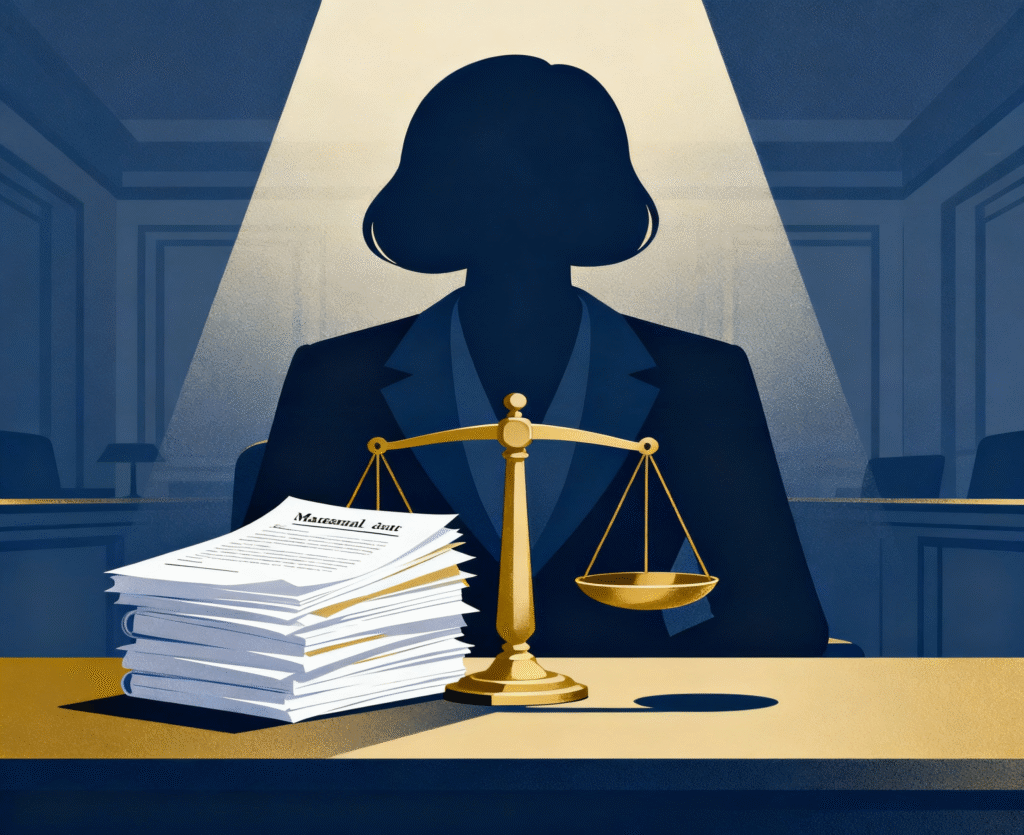Published On: 16th July, 2024
INTRODUCTION:
As per Vonnegut, “Cigarette smoking is the classy way to commit suicide.” These words hold much relevance today as smoking in public places has increased manifold. Worldwide tobacco-related deaths now exceed 5 million a year. Left unchecked, the number is expected to exceed 8 million a year by 2030, and 80% of those tobacco-related deaths will occur in low- and middle-income countries.[1] These facts reveal how severe the issue of smoking is and what detrimental results it can possess. The quantities of irritating gases in a poorly ventilated space, such as an automobile or a smoke-filled room, can rapidly reach several hundred parts per million. This presents a hazardous risk to those present, including nonsmokers.[2]
The viewpoint of this case summary will be that of the non-smoker in public. The issues discussed are primarily concerned with the detrimental effects of tobacco smoke and its infringement on the rights of the nonsmoker.
FACTUAL BACKGROUND OF THE CASE:
Renowned Indian Human Rights Activist Murli S. Deora filed a civil writ suit in the Supreme Court of India in 1999, citing Article 32[3] of the Indian Constitution to outlaw smoking in public areas. It was a public interest litigation. The injunction sought to outlaw public smoking because it was harnessing public health. According to the petitioner, everyone is protected from the harmful effects of tobacco use by their right to life and liberty espoused in Article 21[4] of the Indian constitution. He cited other medical studies that discussed the potential health risks that secondhand smoke inhalation poses, including heart attacks, migraines, respiratory issues, and nausea.
PARTIES INVOLVED IN THE CASE:
- (Petitioner) Murli S. Deora
- (Respondent) Union of India and Ors.
LEGAL ISSUES:
The tussle between the government of Delhi and the Centre revolves around the following issues:
- Whether smoking in public places deprive the right to life of a non-smoker under Article 21 of the Constitution of India?
- Whether smoking have to be banned in public places? [5]
A bigger concern for the public at large is the health issues faced by passive smokers. Data pertaining to this concern of a wife getting affected due to his husband’s smoking habit shows that non-smoking wives could contract lung cancer via their husbands’ smoke. Schoenherr published this data in 1928. [6] The case taken in this analysis revolves mainly around the bad health effects caused by smokers to passive smokers. There are laws that primarily talk about the legal implications of smoking in public. Some include fines or imprisonment whereas some include both.
- Article 21 of the Indian Constitution: According to Article 21: “No person shall be deprived of his life or personal liberty except according to procedure established by law.” The right to life is not just about the right to survive. It also entails being able to live a complete life of dignity and meaning.
- Cigarettes and Other Tobacco Products Act (COTPA), 2003: Section 4[7] of the COTPA talks about the prohibition of smoking in a public place which reads “No person shall smoke in any public place: Provided that in a hotel having thirty rooms or a restaurant having a seating capacity of thirty persons or more and in the airports, a separate provision for smoking area or space may be made.”[8] It is forbidden under this section for anybody to smoke in certain regions and disturb the quiet of others nearby. The offense committed in violation of COTPA is subject to bail and compounding, and it is prosecuted in line with the guidelines for summary trials. The Statute imposes a fine of Rs. 200 on the offender; the government has now introduced an amendment bill in the Parliament to increase this amount to Rs. 1000.[9] Section 5 [10] of COTPA states that: “Advertising of tobacco products is prohibited. No one involved in the tobacco industry may advertise, no media outlet may display tobacco ads, and no individual may participate in advertising that promotes tobacco use.” It is mandatory for the manufacturer to necessarily have a warning sign printed on the package. In case of failure to adhere to the same, there is punishment for failure to give specified warning and nicotine & tar contents under Section-20(1)[11] & Section-20(2)[12] of COTPA 2003.
- Prohibition of Smoking in Public Places Rules, 2008[13]: Rule 3 of this Act reads as:
The owner, proprietor, manager, supervisor, or in charge of the affairs of a public place shall ensure that:
- No person smokes in a public place (under his jurisdiction/implied).
- The board as specified in Schedule II is displayed prominently at the entrance of the public place, in case there is more than one entrance at each such entrance and conspicuous place(s) inside.
- No ashtrays, matches, lighters, or other things designed to facilitate smoking are provided in public places.[14]
- The Bharatiya Nyaya Sanhita, 2023: Section 280[15] of The Bharatiya Nyaya Sanhita, 2023 talks about provisions related to making the atmosphere noxious to health. It reads as “Whoever voluntarily vitiates the atmosphere in any place to make it noxious to the health of persons in general dwelling or carrying on business in the neighborhood or passing along a public way, shall be punished with fine which may extend to one thousand rupees.” [16]
ARGUMENTS OF PARTIES:
Smoking in public places might not appear as a very big crime or an act of nuisance but the fact that smoking affects passive smokers more than the actual smokers can not be neglected. Indian legislations are designed in such a way that all the horizons of people are covered for seeking remedy for any trivial act too.
- Article 21 guarantees that No person shall be deprived of his life or personal liberty except according to procedure established by law. The Indian Constitution’s Article 21 forbids taking someone’s life without granting them a fair trial, which is one of their fundamental rights. There is no doubt that smoking is bad for one’s health and can have an impact on smokers, but there is no reason why passive smokers’ health should suffer in the same way. Smoking in public places violates a person’s right to live with dignity which amounts to the violation of the fundamental rights of a person guaranteed under Article 21 of the Indian Constitution. Thus, smoking in public and its harmful effects are not justified in any way and must be prohibited.
- In a similar vein, the Cigarettes and Other Tobacco Products 2003’s Statement of Objects and Reasons states the following: “Tobacco usage is acknowledged as one of the largest risks to public health, accounting for an estimated eight lakh fatalities in the country annually. It has also been shown that the country has to spend around Rs 13,500 crores a year on treating diseases linked to tobacco use and the productivity losses they create. This sum more than offsets any revenue and employment advantages the tobacco industry may have had.”[17]
- The petitioner also pointed out that warning signs on tobacco products shall be made mandatory for the manufacturers/sellers to make the public aware of the harmful effects caused by smoking or consumption of any other tobacco product. The court adjudged that the manufacturers/sellers must keep a label mentioning the level of tar & nicotine content in that particular tobacco product.
- The owner, proprietor, manager, supervisor, or in charge of the affairs of a public place also has some liabilities and responsibilities which are mentioned in the Prohibition of Smoking in Public Places Rules, 2008.[18] It states that these persons must ensure that no one smokes in public. Along with this, they have the responsibility of prominently displaying the warning boards at the entrance. Also, they must ensure that No ashtrays, matches, lighters, or other things designed to facilitate smoking are provided in public places. In light of the same, the learned Attorney-General as well as counsel for the parties submitted that considering the harmful effect of smoking, smoking in public places is required to be prohibited.
RELEVANT CASE LAWS:
- Narinder S. Chadha v. Municipal Corpn. of Greater Mumbai[19]: The bench was led by Ranjan Gogoi and R.F. Nariman. In this case, through the licensing procedure, the governments of Gujarat, Mumbai, and Madras forbade the usage and sale of hookah at dining establishments. Restaurants that served hookahs contested court rulings in these areas that permitted the government orders to take effect. The court determined that the local government instructions fell outside the purview of the Smoke-free Rules and the Cigarette and Other Tobacco Products Act (COTPA) in this ruling. The court determined that banning the sale of tobacco goods or other services intended to encourage smoking in these locations would go beyond the bounds of the law, as smoking facilities are now permitted in hotels, restaurants, and airports.
- Vijay Chandra Jha v. Delhi High Court[20]: In this case, it was pleaded that near Gate No. 7 of the Delhi High Court, there are 15 shops in a row amongst which Shop No. H is a cigarette/tobacco selling shop. It is alleged that the location of the said shop in the High Court premises has led to litigants, advocates, court staff, and other people visiting the court to passive smoking and it has also resulted in people smoking in the small area of glass canteen itself covering the whole area with smoke. It is contended that permitting and allowing the said shop to run inside the court premises is in violation of Section 4 of the Cigarettes and Other Tobacco Products (Prohibition of Advertisement and Regulation of Trade and Commerce, Production, Supply, and Distribution) Act, 2003 (for short ‘the 2003 Act’) as well as Rule 3 of the Prohibition of Smoking in Public Places Rules, 2008 (for short ‘the 2008 Rules’) made thereunder.
RATIO DECIDENDI OF THE CASE:
The ratio decidendi of the case can be summarized as follows:
- Smoking is injurious to health and may affect the health of smokers, but there is no reason that the health of passive smokers should also be adversely affected. [21]
- The statement of objects and reasons for the Cigarettes (Regulation of Production, Supply, and Distribution) Act, 1975, and the Cigarettes and Other Tobacco Products (Prohibition of Advertisement and Regulation of Trade and Commerce, Production, Supply, and Distribution) Bill, 2001, confirm the harmful effects of smoking on health.
- The court directed and prohibited smoking in public places, including auditoriums, hospital buildings, health institutions, educational institutions, libraries, court buildings, public offices, public conveyances, and railways.
- The court also directed the Union of India to give wide publicity to the order by electronic and print media to make the general public aware of the prohibition of smoking in public places.
HOLDING:
Hon’ble Supreme Court directed and prohibited smoking in public places and issued directives to the Union of India, State Governments, and the Union Territories to take effective measures to ensure prohibiting smoking in public places, taking into account the seriousness of the situation and the detrimental effects of smoking on smokers and passive smokers. Public places include the following areas:
- Auditoriums
- Hospital buildings
- Health Institutions
- Educational Institutions
- Libraries
- Court Buildings
- Public office
- Public Conveyances, including Railways.[22]
CONCLUSION:
Based on the case analysis, it is evident that the Supreme Court outlawed smoking in public areas by incorporating “Judicial Activism“. The judiciary, in turn, planted the seeds for the ban on smoking in public areas. It went so far as to declare that the right to a healthy environment is a basic right protected by Article 21 of the Indian Constitution, in addition to outlawing smoking in public areas. Judicial Activism again proved to be a way which change the situation that non-smokers faced before this judgement and anti-smoking laws. Regular attempts are being made by both the Central, State, and local governments to ensure that the environment remains a zone that is free of noxious substances and provides free and healthy air to everyone. In this regard, Chandigarh achieved the milestone of becoming India’s first smoke-free city in 2007. In order to prohibit smoking in public places, the government has also issued a National Toll-Free Helpline Number: 1800-110-456 on which people can register complaints if someone around them is smoking in public. Even if the Indian government’s actions have produced noticeable effects, much more work has to be done to fan the sparks of change these actions have created.
Reference(s):
[1] CDC Grand Rounds: Current Opportunities in Tobacco Control. (2010). Morbidity and Mortality Weekly Report, 59(16), 487–492. http://www.jstor.org/stable/23320026
[2] Jerry R. Brink, The Non-Smoker in Public: A Review and Analysis of Non-Smokers’ Rights, 7 SAN FERNANDO VALLEY L. REV. 141 (1979)
[3] INDIA CONST. art. 32.
[4] INDIA CONST. art. 21.
[5] Id.
[6] Schönherr E. Beitrag zur statistik und klinik der lungentumoren. Journal of Cancer Research and Clinical Oncology. 1928;27(5):436–50. [Google Scholar]
[7] Cigarettes and Other Tobacco Products Act (COTPA), 2003, § 4, No. 34, Acts of Parliament, 2003 (India).
[8] Cigarettes and other tobacco products (Prohibition of Advertisement and Regulation of Trade and Commerce, Production, Supply and Distribution) Act, 2003. (2003, May 18). https://www.indiacode.nic.in/handle/123456789/2053?locale=en
[9] Corner, L. (2021, January 17). Laws on smoking at public places in India – Law Corner. Law Corner. https://lawcorner.in/laws-on-smoking-at-public-places-in-india/
[10] Cigarettes and Other Tobacco Products Act (COTPA), 2003, § 5, No. 34, Acts of Parliament, 2003 (India).
[11] Cigarettes and Other Tobacco Products Act (COTPA), 2003, § 20(1), No. 34, Acts of Parliament, 2003 (India).
[12] Cigarettes and Other Tobacco Products Act (COTPA), 2003, § 20(2), No. 34, Acts of Parliament, 2003 (India).
[13] The Prohibition of Smoking In Public Places Rules, 2008Published vide Notification in Gazette of India, Extra, Part 2, Section 3(i) dated 30.5. 2008, pp. 3-4, No 304 vide GSR 417(E), Dated 30.5. 2008.
[14]https://upload.indiacode.nic.in/showfile?actid=AC_CH_60_1033_00035_00035_1598427009422&type=rule&filename=smoking_in_public_rules.pdf (last visited Jun. 12, 2024)
[15] The Bharatiya Nyaya Sanhita, 2023, § 280, No. 45, Acts of Parliament, 2003 (India).
[16] THE BHARATIYA NYAYA. (2023). THE BHARATIYA NYAYA (SECOND) SANHITA, 2023. In THE BHARATIYA NYAYA (SECOND) SANHITA. https://prsindia.org/files/bills_acts/bills_parliament/2023/Bharatiya_Nyay_(Second)_Sanhita_2023.pdf
[17] Kumar Rout, M., & Arora, M. (2014, May 23). Economic burden of tobacco-related disease in India. who.int. Retrieved June 12, 2024, from https://www.who.int/docs/default-source/searo/india/tobacoo/economic-burden-of-tobacco-related-diseases-in-india-executive-summary.pdf?sfvrsn=ac0db06_2
[18] Supra note 13.
[19] Narinder S. Chadha v. Municipal Corpn. of Greater Mumbai, (2014) 15 SCC 689
[20] Vijay Chandra Jha v. Delhi High Court, 2017 SCC OnLine Del 7818
[21]https://ppl-ai-file-upload.s3.amazonaws.com/web/direct-files/6874894/a6565c53-10c1-4277-80a7-cd7c4332080e/Murli_S_Deora_vs_Union_Of_India_And_Ors_on_2_November_2001.PDF (last visited Jun. 14, 2024)
[22] Murli S. Deora v. Union of India, (2001) 8 SCC 765




